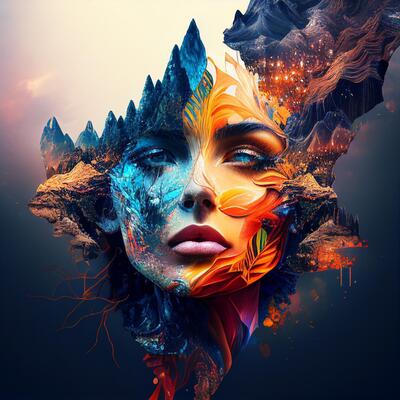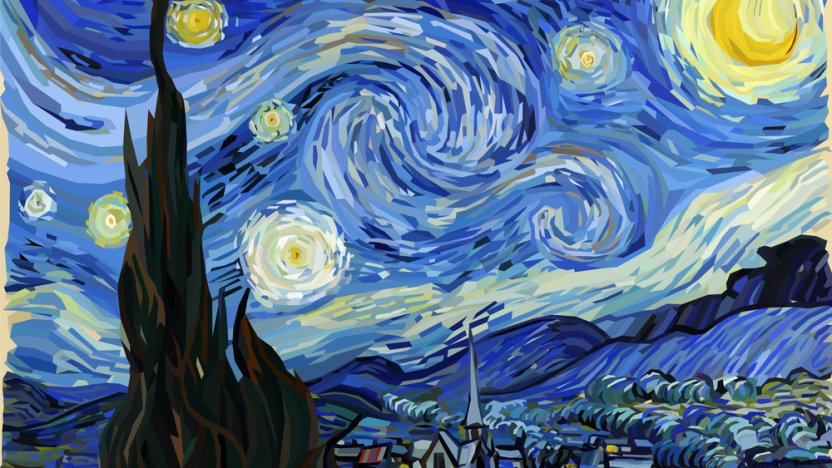The Evolution of Trump Art: From Very Early Reviews to Contemporary Viewpoints
The Evolution of Trump Art: From Very Early Reviews to Contemporary Viewpoints
Blog Article
Digging Into the Diverse Globe of Artistic Expression: From Surrealism to Abstract Realism
In the world of imaginative expression, from the dreamlike landscapes of surrealism to the complex play of light and kind in abstract realism, artists have continually pushed the borders of creative thinking and creativity. Each movement holds a distinct lens where the globe is viewed and analyzed, providing a glimpse into the midsts of human feeling, assumption, and thought. As we discover the multifaceted globe of art, we exist with a tapestry of styles, methods, and philosophies that challenge our understanding and prompt reflection. The journey through these varied forms of creative expression promises to unwind an abundant tapestry of aesthetic narration and intellectual questions that astounds the mind and mixes the soul.
Surrealism: Releasing the Subconscious
Surrealism, a progressive artistic activity of the 20th century, explored the midsts of the subconscious, revealing a globe of dream-like imagery and unconventional juxtapositions. Headed by artists like Salvador Dali, René Magritte, and Joan Miró, Surrealism looked for to challenge the traditional methods of seeing and comprehending art. Through strategies such as automatism and dream evaluation, Surrealist musicians intended to touch into the unconscious mind to disclose surprise truths and needs.
Among the crucial elements of Surrealism was the focus on the irrational and the uncanny. By integrating unexpected elements in their works, Surrealist artists intended to produce a feeling of disorientation and surprise in the viewer. This interruption of reasoning and factor was indicated to provoke a deeper exploration of the subconscious and the enigmas of the human mind.
Abstract Realism: Redefining Perception
Challenging standard creative limits, Abstract Realism redefines assumption with the fusion of identifiable elements with abstract kinds. This cutting-edge approach to art integrates the representational accuracy of realism with the creative freedom of abstraction, using audiences a distinct aesthetic experience that prompts them to examine their assumption of fact.
In Abstract Realism, musicians make every effort to capture the significance of their subjects while also infusing their collaborate with a feeling of deepness and intricacy via abstract aspects. By blending the aware of the unknown, these artists invite audiences to engage with their items on several degrees, encouraging them to check out the subtleties of kind, color, and structure.

Cubism: Breaking Up Fact
Utilizing geometric kinds and fragmented perspectives, Cubism changed the artistic representation of fact in the very early 20th century. Developed by Pablo Picasso and Georges Braque, Cubism sought to challenge standard notions of perspective and depiction. By damaging down items and numbers right into geometric forms and offering them from several perspectives concurrently, Cubist musicians intended to catch the essence of the subject as opposed to its literal appearance. This technique not just deconstructed reality yet also stressed the flatness of the canvas, Web Site leading the way for future abstract art motions.

Cubism can be categorized right into 2 main stages: Analytical Cubism, characterized by monochromatic color pattern and intricate, fragmented kinds; and Synthetic Cubism, which included collage elements and brighter colors right into the compositions. With these unique phases, Cubism affected not only paint but additionally sculpture, design, and design. trump art. Its effect reverberated across the art world, inspiring musicians to discover brand-new methods of translating and standing for the globe around them
Expressionism: Feelings on Canvas
Exploring the midsts of human emotions with meaningful and dazzling brushstrokes, Expressionism emerged as an extensive artistic motion in the early 20th century. Unlike previous art motions that concentrated on showing the outside globe, Expressionism dove into the interior world of the musician's psyche, intending to evoke raw emotions and provoke natural reactions from customers.
Expressionist musicians, such as Edvard Munch, Egon Schiele, and Emil Nolde, rejected standard notions of appeal and realistic look for misshaping type and shade to convey subjective feelings. Using overstated brushwork, vibrant shades, and altered figures aided develop a feeling of anxiousness, alienation, or interest in their works.
One of one of the most renowned examples of Expressionism is Munch's "The Scream," which catches the intense stress and anxiety and anguish of contemporary life through its swirling, altered official statement figure against a blood-red skies. Via their psychologically charged works, Expressionist musicians sought to challenge traditional imaginative standards and give a home window into the rough midsts of the human spirit.
Contemporary Art: Developing Point Of Views

Among the defining characteristics of modern art is its continuous development and ability to adjust to changing cultural landscapes. Artists are significantly incorporating modern technology into their technique, blurring the lines in between the electronic and physical worlds. This fusion of tools permits ingenious methods of storytelling and engaging with audiences in a much more interactive way.
Furthermore, modern art usually functions as a platform for social discourse, attending to pushing issues such as identity, politics, and the environment. Musicians are using their work to provoke and spark vital conversations thought, clarifying the complexities of the world we reside in. As point of views remain to progress, contemporary art remains a dynamic and prominent pressure in shaping our social landscape.
Conclusion
To conclude, the globe of artistic expression encompasses a vast array of styles and activities, each with its very own special strategy to conveying significance and emotion. From surrealism's exploration of the subconscious to abstract realistic look's redefining of assumption, and from cubism's fragmentation of reality to expressionism's representation of feelings, art remains to develop and challenge perspectives - trump art. Contemporary art shows the ever-changing globe we live in, using brand-new means to interpret and understand the complexities of our reality
As we discover the complex globe of art, we are presented with a tapestry of designs, methods, and philosophies that test our understanding and provoke consideration. Its effect reverberated across the art globe, inspiring musicians to explore new means of analyzing and standing for the globe around them.

Report this page